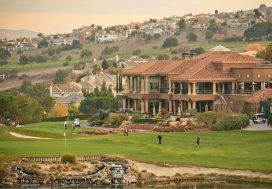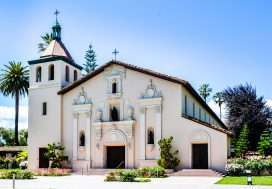East Oakland is an urban mix of single-family homes and warehouses that has largely been passed up by Oakland’s recent new development boom. But new plans to redevelop the area around the Oakland Coliseum, home of the Oakland A’s and previously the Raiders and Golden State Warriors, could bring big changes to the area, according to a recent article in the Mercury News.
Last November, the A’s announced that they plan to build a new ballpark, which will be located at Howard Terminal, and that the Coliseum site will be turned into a mixed-use development with housing, retail spaces, and a science and technology university. All of this will be centered around a baseball diamond.
The A’s and their development team believe the new development will bring a much needed boost in economic opportunities to the area, including a grocery store that local residents have been longing for. But skeptics fear gentrification will cause the existing local community lose out.
“East Oakland is the last battleground against gentrification,” said John Jones III, a long-time local resident. “We’ve already seen it happen in North Oakland, and it’s been creeping further east. (East Oakland) is the last safe place for low-income communities of color, and we have the opportunity to be on the front end of that.”
The A’s proposal for the 157-acre site between 66th Avenue, Hegenberger Road, Coliseum Way, and San Leandro Street would includes:
- Keeping the Oracle Arena there for entertainment events
- Adding retail stores, tech buildings, and offices along Coliseum Way
- And adding housing along the northwest corner at 66th Avenue and the northeast corner at Hegenberger Road
A’s president, Dave Kaval, said the team’s plan to redevelop the Coliseum site is an effort to “honor” the neighborhood and to ensure that it’s not left behind after the franchise relocates a few miles up the Nimitz Freeway. Kaval said he wants the area’s longtime residents to have “equity in the success of the project.”
“I think it can be a catalyst for a lot of the challenges in East Oakland,” Kaval said “It can’t solve all of the problems, but it can help with the solution.”
“I’m old enough to remember when East Oakland was a community,” said local resident John Jones. “It was a place where you knew your neighbors, a place where you could knock on a door and borrow a cup of sugar or borrow someone’s dustpan. But what followed was crack and guns, and then violence, and it really transformed this neighborhood to a point where we now call it a ‘hood, because it lost its neighbor aspect.”
District Councilman Larry Reid said there’s been a decline in the area’s crime rate since the 1990s, which has created an interest in East Oakland real estate.
“There’s certainly some remaining work to do,” said Reid, “but it’s safer by and large, and I’d take the way it is today over the way it was 20 years ago.”
Anna Cash, the associate director of UC Berkeley’s Urban Displacement Project, said neighbors’ concerns about gentrification should be taken seriously.
“I think there are a lot of parts of East Oakland where community members have been asking for investment for a long time,” said Cash. But the question is whether long-term residents can stay to reap the benefits or be displaced.”
Currently, near the Coliseum site, a 110-unit affordable housing project is being built at the BART station. Plus, a 59-unit affordable housing development at 905 72nd Ave. is in the permitting process.
While the A’s are moving forward with the development project, they still have not been guaranteed the site, which is jointly owned by the city of Oakland and Alameda County. Currently, the county has been negotiating to sell its stake to Oakland.
The A’s proposal is not the first to try to redevelop the Coliseum site. In 2015, Floyd Kephart pitched a plan to buy 90 acres of the Coliseum complex for $116 million and to build a new stadium, homes, a shopping center, office buildings, and a hotel.
A year later, NFL Hall of Famer Ronnie Lott and his investment group attempted to enter into an exclusive agreement with the city and county in an attempt to keep the Raiders from moving to Las Vegas.
“Most of the other plans created a fortress within the current 140 acres of the Coliseum site,” Dave Kaval said. “We turned the site inside out. The site itself has the village green and digits that extend out, making sure it’s not only a positive catalyst to where the teams play but for all of East Oakland.”
The A’s have not penciled out exactly how much housing there will be, Kaval added. But input received during community outreach meetings has favored a mix of affordable housing and market-rate apartments.




